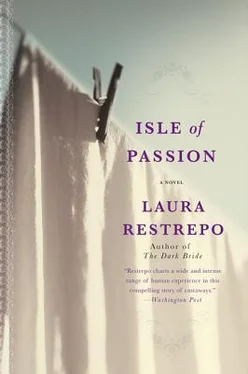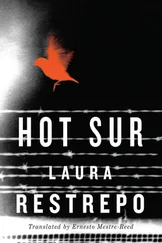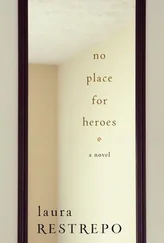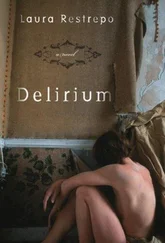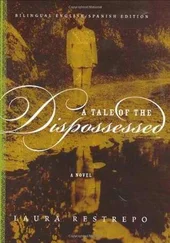Marble from Carrara, Baccarat lamps, Henry II furniture — or his fucking mother’s, who gave a good goddamn, he had the lieutenant bars pinned on his jacket, his appointment had been signed, and in eight days he was leaving for Japan with Avalos, representing his government; he had been granted a face-to-face interview with none other than Don Porfirio himself, and, come what may, no one could take that away from him.
It all had happened as if by magic; literally from one day to the next he had gone from being a poor devil, an outlaw, a loser, a failed junior officer, a provincial nobody, and a deserter, to becoming a lieutenant and a governor, a man trusted by the establishment. Suddenly he had been graced by the gods.
“Some day a page will be written about me in the history of my homeland,” he unexpectedly declared out loud.
That night in his room, while he unbuttoned his suffocating dress uniform jacket, and relaxed the muscles of his incipient belly, he added: “And if nothing gets written, at least I got a pay raise.”

A PHOTOGRAPH IN SEPIA, taken in an interior with printed velvet draperies in the background, and dated on the lower-right corner “May 1908”—that is, a few days before the wedding — shows Alicia the way she was then: with a gracefully dimpled chin, a porcelain complexion on her doll-like face, the light shadow of her straight eyebrows, and an adult gaze in her little girl’s eyes.
It took her six months to do the twenty yards of lace for her wedding dress, and during this time she repeated the same operation a million times — hook in one hand and in the other the ball of linen thread from Holland — yarn over twice, insert hook, draw up a loop. Those were the last six months she spent at home with her parents in Orizaba, at number 3 °Calle Tercera de la Reforma, while her fiancé, Ramón, was away on his military mission.
She, the child bride, was waiting for his return. At times she felt like an adult attending marriage preparation courses, where she learned that at the moment of the marital encounter, she should close her eyes and pray, “Oh Lord, make me not take pleasure in this.” Or she would sit and visit with her relatives Dorita Rovira, now Mrs. Virgilio, and Esther Rovira, who was Mrs. Castillo. Or she would sit and sew clothes for the poor with Ramón’s sister, Adelita, and with his aunts Trinidad Vignon, Maria Vignon Aspiri, and Leonor Arnaud, who was a widow.
At times she was just like a child running along the house corridors shaded by ferns, making sure she did not step on the yellow floor tiles, only the blue ones. Or without stepping on the blue ones, only on the yellow ones. She played wolf with her sisters, and cops and robbers, or pretended that the hallway was the ocean and that the pillows they laid on the floor were sharks. When she got tired, she sat on a bench under the palm tree in the patio to think about Ramón, or something else, or nothing at all. She liked to imagine lavish weddings, eternal loves, honeymoons on a deserted island.
Sunny mornings in Orizaba always had a warm fragrance, bittersweet and tropical green. It smelled of moss in between rocks, of beasts ruminating on wet grass, of fresh cow dung, of oranges just squeezed. That fragrance made its way to Alicia’s bed and into her nostrils, caught her skin and made her hair curl. She felt an urge to go out in the open air, to the open country, to be going up and down the surrounding hills on her own — letting her stubborn mule lead the way.
“Where are you going? Have you lost your mind?” shouted her mother, seeing her on her way out with her hair undone.
She did not know where. Anywhere. She ran barefoot, like the Indian girls, through open yards full of chickens, past clotheslines with newly washed clothes, and by poor people’s homes with their red gladioli.
“Miss Alicia, buy some peaches!” “Here, get some tortillas!” “Let me sell you this turkey!” She dropped by Santa Gertrudis to see the burlap factory, the latest novelty in Orizaba. For hours she observed the four hundred laborers milling around like ants. Amazed, she tried to understand how the falling water could move the looms and the machines to spin the fibers, to sew the sacks, to roll the fabric.
“The water falls with the power of eight hundred horses,” said the foreman, who explained everything all over again each time she came.
“Of eight hundred horses,” echoed Alicia, and she asked him again about the dynamos, about the Pelton system, about the copper strips that distributed the electricity.
There were days when her mule’s easy trot would take her far, up to the cotton textile factory in Rio Blanco. It was the largest and most modern in the world. Six thousand men, women, and children worked there. As she was getting closer, her heart beat faster, her mouth became dry. She and Ramón had been there once. She liked to stay there for a while, looking at the big clock the owners had placed on top of a tower facing the buildings, with its four transparent quadrants lit by night, and the loud bells and whistles to strike every hour on the hour. There was nothing like it in Orizaba.
“Let’s get out of here,” Ramón had said.
“Let’s wait a little bit more, the clock is just about to strike,” she pleaded.
“Let’s go now, this place has the smell of blood.”
On the way back Ramón told her what nobody in Orizaba ever mentioned. He made her swear, kissing a cross, never to repeat it. If anybody found out he had told her that, he would be thrown out of the army.
“A few years ago there was a strike here and workers were killed. I do not know how many of them, probably hundreds. A friend of mine who worked for the local sheriff’s office saw their corpses. They were piled on the two railroad platforms, so many he could not even count them. There were women and children, and also loose parts, arms, legs. My friend told me that the train left for Veracruz, where the dead were thrown to the sharks.”
Orizaba grew chilly in the afternoons, the fragrances in the air died out, and smells from the kitchen invaded the house, particularly that of hot chocolate with cinnamon and vanilla. There was often a persistent light rain the townspeople called chipichipi . Her mother and her aunts turned wistful. Sitting at the long dining room table, Alicia listened to their talk, while dunking bits of Mexican pan dulce into her hot chocolate. Doña Petra and her sisters waxed nostalgic about many things, but above all about the day they saw Emperor Maximilian passing by at close range, his golden beard parted in two, accompanied by the demented empress in her mauve silks.
After the chocolate they usually joined the religious procession. Alicia tried to protect her head from the drizzle with a black lace mantilla and accompanied all the women in her family, including the maids, to take Our Lady of Sorrows for an outing. They would rescue her image from its niche in the Temple of the Twelve Virgins, where she had been agonizing since colonial times, her face haggard, and take her on their shoulders to parade her in the streets, decked in her black velvet mantle all embroidered in baroque pearls.
The evenings belonged to the ghosts. At the Rovira home, the family retired early to hear them pass by. At the stroke of midnight, in a vertiginous horse carriage, death would take the legendary figure of la Monja Alférez (the Ensign Nun) to receive her nightly punishment for the unmentionable sins she had committed in life. Then, through all the underground tunnels beneath the city, Mexican soldiers marched, trying to escape from the invading French, and one could hear the trampling of their feet and their laments. And through small openings in the draperies, dead orphaned children, called chaneques by the locals, would peer in from the darkness in order to spy on the lit interiors of the town houses. These giggling chaneques, with their lighted candles, were small, infantile, wicked.
Читать дальше
